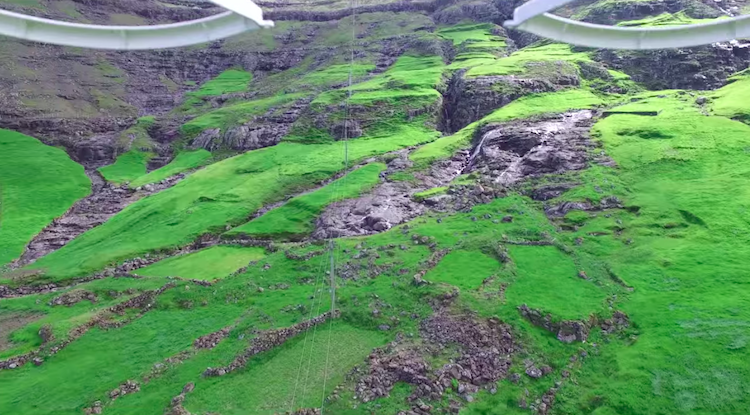Visual Experiments in Drone Power
Image: Still from Points of Presence. Source: YouTube
Adam Fish
The article written by myself and Michael Richardson, ‘Drone Power: Conservation, Humanitarianism, Policing and War’, for Theory, Culture & Society, offers a theory of existential technology. For us the drone is not exclusively a tool for death but also for life. For me this research was driven by a disconnect between my personal and professional experiences flying drones and dominant drone theory. As a drone pilot who has flown and assisted in the flying of drones in humanitarian and environmental interventions in Australia and Indonesia, I had first-hand experience that flew in the face of the cynical, instrumental, and totalizing theories of drones usually derived from studies of military drones. Drones don’t only kill but they support life. In both life-supporting and life-harming actions, drones don’t always work. I produced two video documentaries to make these points about existential technologies and their contingencies.
The first Points of Presence (2017) uses drones to map the information infrastructure -- undersea fibre-optical cables and data centers -- connecting several islands in the North Atlantic. Points of Presence shows how the drone, the internet, and the environment -- the ocean, beaches, but also the air -- afford and disturb connectivity. The drone’s power is not absolute and dependent upon what the elements afford and geographies allow. This is a far-cry from the drone’s feared ‘god vision.’
The second video Crash Theory (2019) theorizes what it means that drones often crash in humanitarian, social justice, and environmental work. Today many institutions, policies, and technologies seem to be failing. I take the crashing drone as a material link to the extinction crisis, arguing that entropy connects the two. I conclude the documentary by considering how conservation technologies may reverse entropy, what Bernard Stiegler calls negentropy. The drone is an existential technology but one limited by the world around it.
As we argue in the article, the drone has a performativity that draws from but cannot be reduced to its materiality. In this spirit of material-semiotics, we offer you these two videos as flightways through some of the issues in this article such as existential technologies, environmentality, humanitarianism, securitization, and performativity.
Adam Fish is a Scientia Associate Professor in the School of Arts and the Media, at the University of New South Wales. Dr Fish employs ethnographic, participatory, and creative methods to examine the social, political, and ecological impacts of new technologies. He has authored three books including: ‘Hacker States’ (MIT, 2020, with Luca Follis), about how state hacking impacts democracy; ‘Technoliberalism’ (Palgrave Macmillan, 2017), an ethnography of the politics of internet and television convergence in Hollywood and Silicon Valley; and ‘After the Internet’ (Polity, 2017, with Ramesh Srinivasan), which reimagines the internet from the perspective of grassroots activists, citizens, and hackers on the margins of political and economic power.
Michael Richardson is a Senior Research Fellow in the School of the Arts and Media at the University of New South Wales. His transdisciplinary research investigates the intersection of political violence, technology, and culture. He is currently funded by an Australian Research Council Discovery Early Career Researcher Award on drones and witnessing. He is the author of ‘Gestures of Testimony: Torture, Trauma and Affect in Literature’ (Bloomsbury, 2016), co-director of the UNSW Media Futures Hub, and was named an Australian Broadcasting Corporation Top 5 Humanities Researcher.

